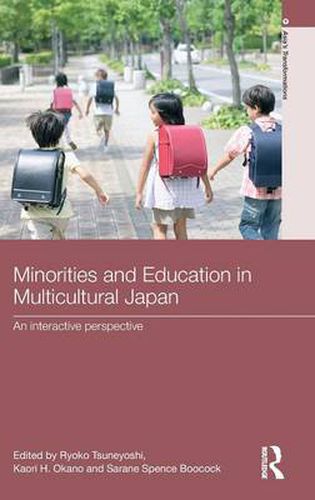Readings Newsletter
Become a Readings Member to make your shopping experience even easier.
Sign in or sign up for free!
You’re not far away from qualifying for FREE standard shipping within Australia
You’ve qualified for FREE standard shipping within Australia
The cart is loading…






This volume examines how Japan’s increasingly multicultural population has impacted on the lives of minority children and their peers at school, and how schools are responding to this trend in terms of providing minority children with opportunities and preparing them for the adult society. The contributors focus on interactions between individuals and among groups representing diverse cultural backgrounds, and explore how such interactions are changing the landscape of education in increasingly multicultural Japan. Drawing on detailed micro-level studies of schooling, the chapters reveal the ways in which these individuals and groups (long-existing minority groups, newcomers, and the ‘mainstream Japanese’) interact, and the significant consequences of such interactions on learning at school and the system of education as a whole. While the educational achievement of children of varying minority groups continues to reflect their places in the social hierarchy, the boundaries of individual and group categories are negotiated by mutual interactions and remain fluid and situational. Minorities and Multiculturalism in Japanese Education provides important insights into bottom-up policy making processes and consciously brings together English and Japanese scholarship. As such, it will be an important resource for those interested in education and minority issues in Japan.
$9.00 standard shipping within Australia
FREE standard shipping within Australia for orders over $100.00
Express & International shipping calculated at checkout
This volume examines how Japan’s increasingly multicultural population has impacted on the lives of minority children and their peers at school, and how schools are responding to this trend in terms of providing minority children with opportunities and preparing them for the adult society. The contributors focus on interactions between individuals and among groups representing diverse cultural backgrounds, and explore how such interactions are changing the landscape of education in increasingly multicultural Japan. Drawing on detailed micro-level studies of schooling, the chapters reveal the ways in which these individuals and groups (long-existing minority groups, newcomers, and the ‘mainstream Japanese’) interact, and the significant consequences of such interactions on learning at school and the system of education as a whole. While the educational achievement of children of varying minority groups continues to reflect their places in the social hierarchy, the boundaries of individual and group categories are negotiated by mutual interactions and remain fluid and situational. Minorities and Multiculturalism in Japanese Education provides important insights into bottom-up policy making processes and consciously brings together English and Japanese scholarship. As such, it will be an important resource for those interested in education and minority issues in Japan.